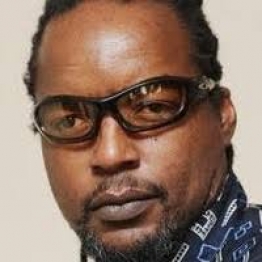
IT has been just over a decade since I got in touch with Trevor Ncube to tell him I could help him put together NewsDay.
I had just returned from South Africa, where I had played a part in the making of the Times — The Sunday Times daily, an achievement I felt stood me in good stead for the task ahead.
I knew Trevor from his involvement with the Mail & Guardian in South Africa.
At the time, the weekly newspaper was highly regarded and was very influential in South Africa. It was hard to ignore its fearless coverage of political scandals.
Around 2007 the troubles began in South Africa. Politicians began shifting the spotlight from their inadequacies and nefarious deeds to a real or imagined influx of foreigners.
Foreigners were blamed for everything — from taking jobs to filling up hospitals. They were even blamed for the housing shortage.
It was just a matter of time before things got unbearable.
By late 2007, xenophobia had reared its ugly head in South Africa and it was clear Zimbabweans were no longer welcome to shelter there.
- Chamisa under fire over US$120K donation
- Mavhunga puts DeMbare into Chibuku quarterfinals
- Pension funds bet on Cabora Bassa oilfields
- Councils defy govt fire tender directive
Keep Reading
South Africans were often heard saying go back home and deal with your problems instead of running away.
It was not a difficult decision to make for myself and many other professionals. A good many, armed with experience and knowledge, took up the challenge.
But the reality in Harare was something else.
In Harare, the frustrations were palpable — a disputed election, empty shops, water shortages, abject poverty, and many other ills were all in evidence.
I had quit my deputy editor position at the Times and had been offered the Harare correspondent job for the Sunday Times.
As a correspondent for the Sunday Times in South Africa, I felt after a while that my articles only served to titillate those who only saw Zimbabwe as a banana republic led by aged imbeciles. I reasoned that such a battered and bruised country needed a local newspaper to galvanise the human spirit to right the wrongs.
That is when I approached Trevor in Harare with a clear purpose — I wanted to be part of something that could open the eyes of those blinded by fear and hopelessness.
My involvement with the NewsDay project was never for the money or the glory — it was a burning desire to do something to restore dignity to a population that had been reduced to buying used underwear.
Unlike the South African Times project that I had been involved in, there were many hurdles. Firstly, NewsDay did not have a licence to publish and the authorities insisted all journalists had to be accredited.
Once I realised that the accreditation process was just another way for the unpopular government to pressure media practitioners, I simply ignored the requirement.
The early days of putting NewsDay together were spent focusing mostly around the design of the paper. There was a designer from overseas whose name I cannot recall.
At the time Barnabas Thondlana was the editor. I was the managing editor.
Once we had the design sorted, the real hard work started.
The size of the paper had been decided by the time I got involved with the project. What we needed to do was to deal with the detail.
How much content would we need? What type of content could we possibly produce, and how long would it take? How many people would we need to carry out the task? We needed to set realistic deadlines for production to be efficient.
Because we did not have a licence to publish, we printed a four-page edition of NewsDay that was distributed inside The Standard every week.
I remember we roped in Isheanesu Dondo, a bright youngster who fancied himself as a cartoonist. The reality was we needed him more as a graphic designer.
It took some persuasion, but he studied the pages and learned to reproduce them at speed. Around the same time, a journalism graduate visited our offices that were located opposite Zanu PF headquarters ironically situated along Rotten Row — Number 1 Kwame Nkrumah Avenue. That graduate was Moses Matenga.
I had met him before at an MDC rally in Highfield, Harare. He had struck me as courageous and adventurous. Governance from Rotten Row was indeed rotten, and the only plausible way out was a unity government.
Morgan Tsvangirai and his Movement for Democratic Change had humbled the aged Robert Mugabe. What I could not understand was the limp media — instead of giving strength to the will of the majority they pandered to Zanu PF.
Led by State media, the advantage of the rightful winners of the 2008 elections was made insignificant by news reporters who could not fathom the idea of change. It was in that atmosphere that NewsDay was conceived. One thing I must credit Trevor for was his belief in the project even though there was no indication if or when we would get the licence to publish.
Armed with a master plan on how many hands we needed to publish the newspaper, we began to seek out relevant talent.
We had my namesake Moses, whom I renamed Josey to avoid confusion, and Isheanesu the artist. Aaron Ufumeli was the photographer.
We recruited Ropafadzo Mapimhidze as chief sub editor, Tangai Chipangura as news editor, Feluna Nleya, Kelvin Jakachira, Veneranda Langa, and Talent Ncube.
Later, Norah Spie returned from South Africa and joined the paper as head of the online edition. It wasn’t all smooth sailing. Egos were in abundance. Those in admin and finance were not necessarily on the same wavelength.
Although Barnabas left the newspaper, the project had to carry on. We continued to publish our four pages inside The Standard complete with the NewsDay masthead. We began to hear from vendors that the four pages we were producing were gaining traction among readers.
It wasn’t long before we heard a word from the streets saying the four-page NewsDay was being sold separately instead of being inset in The Standard.
We knew we were onto something. When we finally got the licence, it was all too much to bear.
There were egos and underlying power struggles to gain control.
Vincent Kahiya was appointed editor of NewsDay.
When the first issue was published on June 4, 2010, I felt my task had been completed.
Moses Mudzwiti is former NewsDay managing editor. He is also former Johannesburg bureau chief of the African News Agency, night editor of the Citizen, associate editor of the New Age, night editor of the Sowetan, news editor of the Star, news editor of the Business Report, news editor of the Cape Times and deputy editor of the Windhoek Advertiser. He has also worked as associate editor of the Times in Oman.











